Tristan Perich
A musician-programmer translates data into melodies


Equal parts programmer and musician, Tristan Perich graduated from Columbia University in 2004 and went on to earn a masters at NYU’s Tisch School of the Arts’ Interactive Telecommunications program in 2007. While the interdisciplinary nature of ITP encourages a student body full of artists, programmers, theorists and less easily classifiable types, there’s nothing confusing about Perich’s work today. Designing code to create music or art, his aesthetic is about putting logic on the surface for a visceral effect, where people can see and understand it.
“Technology is abstracting these processes more and more these days,” Perich said in a recent interview with Cool Hunting. “Take my iPhone. You brush a finger across a piece of glass. We’re so detached from what’s actually happening that the computation itself seems almost magical. These are the sorts of things that make their way into my work—the transparency of a circuit. It’s all laid out there in front of you.”
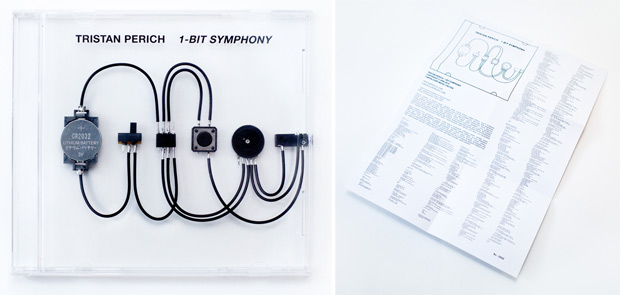
Perhaps the best example of this is Perich’s elegant and attractive 1-Bit Symphony. Perich composed five movements, programmed a microchip, and installed it into a CD jewel case complete with headphone jack. The result is beautifully simple—rather playing back a recording, the circuit plays the entire score live when you turn it on. You can hold a symphony in the palm of your hand.
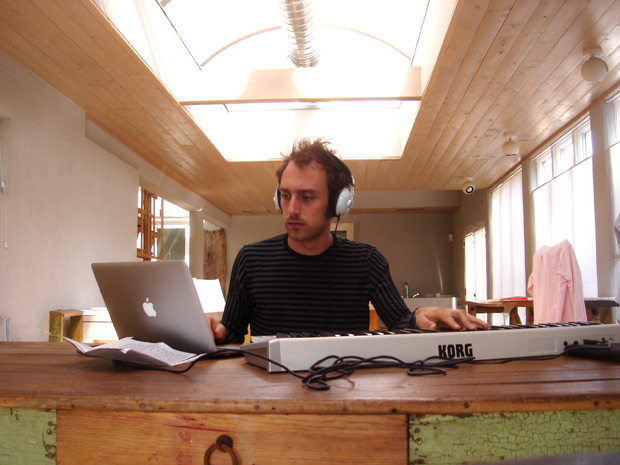
Of course, the one-bit buzzing doesn’t sound anything like a violin, and for some, the score might recall the Super Mario Brothers more than Bach or Beethoven. For Perich, who was a classically trained musician, that’s exactly the point. “I grew up playing the piano, and I hated other peoples’ classical music,”; he said. He started improvising and then composing his own, for himself and later for ensembles, but he was most inspired by the work of minimalist musicians like Philip Glass. “[Glass’s] work is very mathematical and sensitive; it almost lines up on a grid,” Perich said. “It’s a very digital way of thinking about music and harmony.”
Perich composes music for both microchips and traditional instruments, like piano and violin. He also builds visual representations for the sound as well. In an installation called “Interval Studies,” Perich built a board that consists of dozens of small speakers, each emitting a single one-bit tone from between a musical interval. “I took that frequency range and broke it up into 49 or 99 different slivers,” said Perich. “As you move across the piece, you can hear each individual frequency, but when you step back, all the different frequencies resolve themselves into one pitch.”
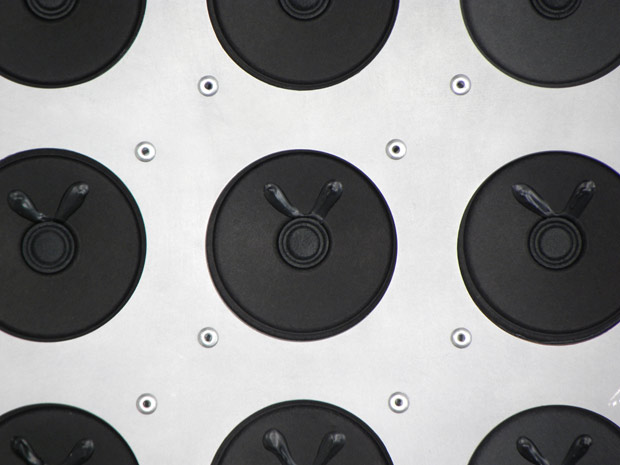
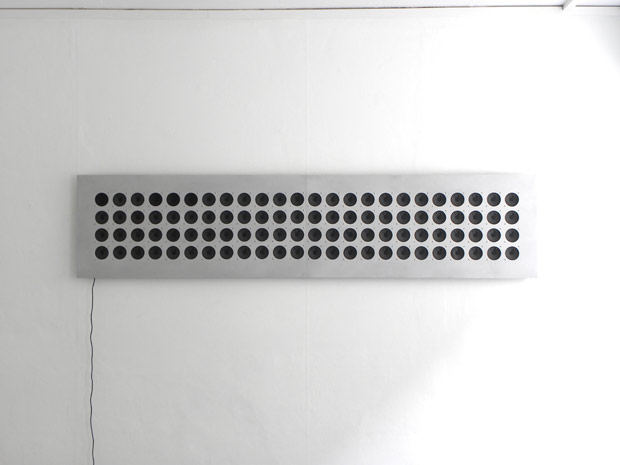
In his side project, Loud Objects, Perich combines the visual, musical and performance aspects of electronics and music. He and bandmates Kunal Gupta and Katie Shima begin with the blank glass of an overhead projector, soldering together chips in silence. At the end, a cacophony of sound signals that the circuit is complete. Adding chips can change the sound in different ways. “At the end, you’ve seen these components connected and understand how power is routed through microchips,” Perich said.
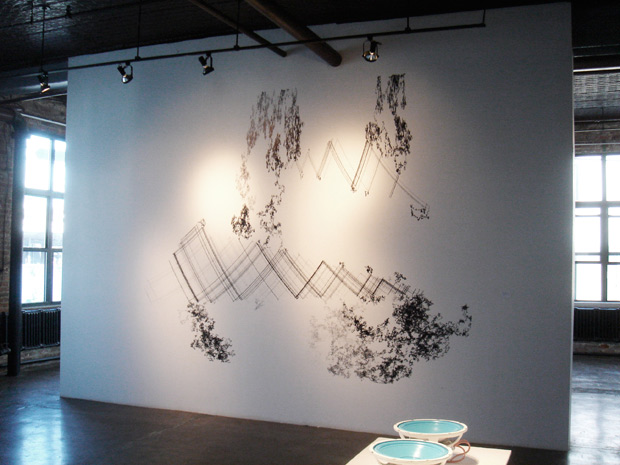

Perich is also currently working on a much larger installation of “Interval Studies” for a Rhizome commission. He received the Prix Ars Electronica in 2009, and was a featured artist in 2010 at Sonar, the International Festival of Advanced Music and Multimedia Art. For him, though, the best part of being an artist might not be sourcing speakers or performing in front of a rapt audience, but in actually doing the math.
“It’s unfortunate that so many people get turned off math by bad teachers,” he said. “I just find the foundations of mathematics to be really inspiring. Like how Turing was working with the limitations of math itself. I just find it to be really beautiful—visually, audibly, and in any other way.”
The Audi Icons series, inspired by the all-new Audi A7, showcases 16 leading figures united by their dedication to innovation and design.












